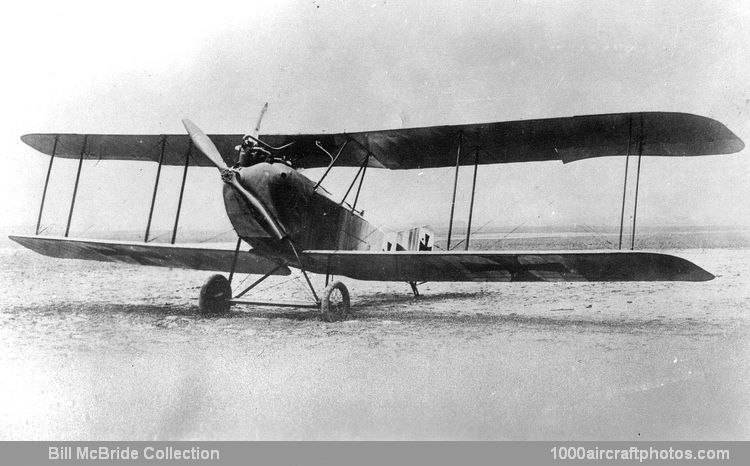07/31/2012. Remarks by Johan Visschedijk: "In 1914-1915 the Allgemeine Elektrizitäts Gesellschaft built small series of unarmed reconnaissance and training biplanes under the designations B.I, B.II and B.III. The first C type (armed two-seater) was the C.I, based on the B.II, powered by an 150 hp Benz Bz III eight-cylinder V-engine and having a Bergmann machine gun in the rear cockpit. In autumn 1915 this was followed by the smaller C.II, a more compact aeroplane capable of carrying four 22 lb (10 kg) bombs. The C.III, which also appeared late in 1915, was apparently influenced by the Roland C.II, for it had a deep, clumsy fuselage that completely filled the interplane gap. No production of the C.III was undertaken.
The principal AEG C-type to appear was the C.IV, produced in 1916 to meet the need to expand German field reconnaissance and contact patrol units. Externally it generally resembled the C.II, but had wings of much greater span. Its 160 hp Mercedes D.III six-cylinder liquid-cooled in-line engine was enclosed in a typical AEG cowling, with the cylinders exposed and a large 'rhino horn' exhaust manifold rising well clear of the top wing. More attention was evidently paid to its structure than to its streamlining, for Allied reports on captured machines commented favorably on the high standard of welding in its steel-tube airframe.
The C.IV entered service in early spring 1916, mainly on escort and reconnaissance duties, and a small number were still operational when the war ended. They were armed with single Spandau guns offset to star board in front of the cockpit, with a Parabellum gun on a Schneider ring mounting for the observer; the latter could accommodate up to 198 lb (90 kg) of bombs in his cockpit.
The only figures available apply collectively to all AEG armed two-seaters; these record a total output of 650 C-types, and a peak employment of 170 at the Front in June 1917. The great majority of these aircraft would have been C.IVs. Variants included the C.IVN night bomber with longer-span wings, a Bz III engine and a carrying capacity of six 110 lb (50 kg) bombs; it appeared in 1917. Production of the C.IV was sub-contracted to Fokker, who may have built some of the C.IVa machines reported to have had 150 hp Argus As.III engines."
